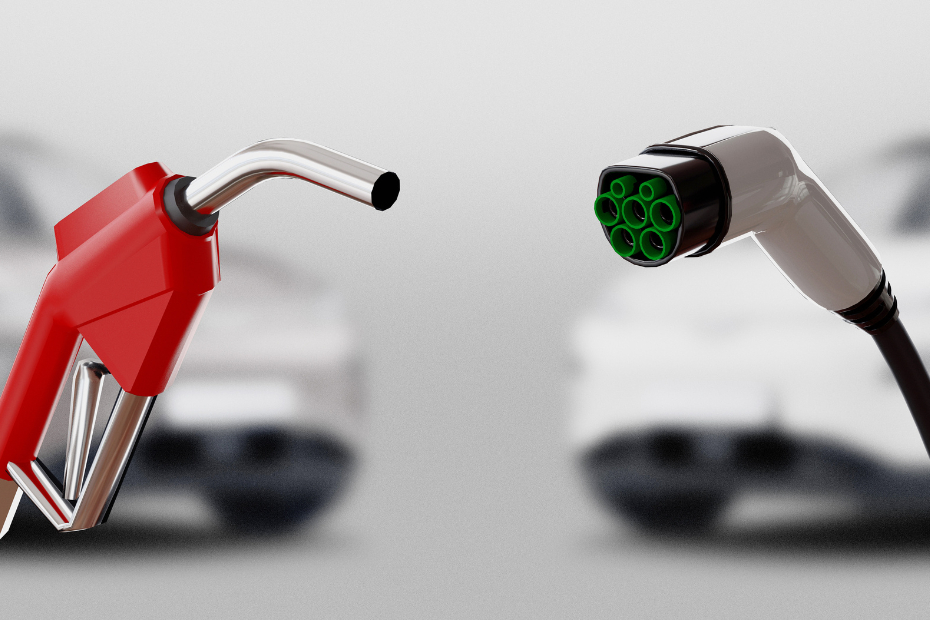Published April 14, 2023 • 4 Min Read
Higher upfront costs can be an obstacle for those looking to buy an electric vehicle (EV). Saving money on gas and lowering your carbon footprint is alluring, but fitting an EV into your budget may be hard. Luckily, Canada’s commitment to a zero-emission economy means federal and provincial rebates are available to ease the stress of these up-front costs on your wallet.
Which vehicles are eligible for iZEV?
Canada’s Incentives for Zero-Emission Vehicles program, or iZEV, provides government rebates for “zero-emission vehicles”. It’s possible to drive these vehicles without emitting any tailpipe emissions (that is, greenhouse gases or other criteria pollutants) into the atmosphere.
Officially, there are three types of ZEVs eligible for rebates:
-
Battery-electric vehicles (BEVs) are powered by electricity only and need an external power source to be recharged. This is considered the most efficient and environmentally friendly option. Newer BEV models that can go between 350 and 450 km between charges are coming to market, but the average model can go around 175 km.
-
Plug-in Hybrid electric vehicles (PHEVs) are primarily powered by a battery that can be charged by an external power source, just like BEVs. The difference is they also have an internal combustion engines powered by fossil fuels. The battery can drive moderate distances on its own, usually around 30 to 80 km. As a result, you can save between 14 and 47 per cent on fuel and cut down on your carbon footprint. It’s worth noting that this type of EV can be more expensive up-front, and its complexity may mean more repairs and maintenance.
-
Fuel cell electric vehicles (FCEVs) are powered by hydrogen gas, a cleaner alternative to oil that emits only water vapour and warm air. FCEVs may be an attractive option because, unlike other EVs, they take only around five minutes to charge. However, these tend to be the most expensive EV options.
Note: If the manufacturer’s suggested retail price (MSRP) of your vehicle is greater than $65,000, you may not receive a federal government rebate on your purchase.
How much of a rebate can I get?
The amount of the government rebate depends on the type of ZEV.
-
Long-range EVs, defined as travelling over 50 km solely on the battery, are eligible for up to $5,000 in point-of-sale rebates. That includes fuel cell electric vehicles and battery-electric vehicles.
-
Shorter-range EVs, like plug-in hybrid electric vehicles, rebates of up to $2,500 are available.
-
Medium and heavy-duty ZEVs (iMHZEV) are vehicles that exceed 8,500 lbs, which include electric trucks, shuttles, minivans and tractors. The incentives for these models range between $10,000 for the smaller vehicles to $200,000 for industrial-sized trucks for businesses.
Have a specific long- or short-range model in mind? You can search Transport Canada’s list of eligible vehicles to see the specific point-of-purchase incentives available.
How do I receive the iZEV incentive?
The rebate is applied during the sale of the vehicle — you’ll see it subtracted from the total amount on your bill of sale, or the lease agreement. Your dealer will include the purchase taxes and fees before the incentive is applied, but you’ll get the full incentive amount.
If your vehicle is used, fails to meet all of Canada’s Motor Vehicle Safety Standards, or if you have already received a government incentive to purchase an EV in the last year, you might not receive the incentive.
Are there provincial rebates available as well?
Yes! Some Canadian provinces have their own incentive programs that can save you more money on top of the federal rebates already available — in some areas, you might save up to five figures altogether. Check the table below to see if there are provincial-level incentives in your area:
| Province | Incentive Program | Cash rebates available |
|---|---|---|
| British Columbia | Go Electric | Long-range ZEVs: Up to $4,000 Short-range ZEVs: Up to $2,000* |
| Quebec | Programme Rabais Vehicule Neuf | Long-range ZEVs: Up to $7,000 Short-range ZEVs: Up to $5,000 |
| Newfoundland & Labrador | Electric Vehicle Rebate Program | Long-range ZEVs: Up to $2,500 Short-range ZEVs: Up to $1,500 |
| New Brunswick | Énergie NB | Long-range ZEVs: Up to $5,000 Short-range ZEVs: Up to $2,500 |
| Nova Scotia | Electrify Nova Scotia | Long-range ZEVs: Up to $3,000 Short-range ZEVs: Up to $2,000 |
| Prince Edward Island | PEI Electric Vehicle Incentive | Long-range ZEVs: Up to $5,750 Short-range ZEVs: Up to $3,250 |
How long will these incentives be available?
At a federal level, the Incentives for Zero-Emission Vehicles program continues until March 31, 2025 — or when the program’s funding is exhausted.
Read more: 7 questions to consider before buying an electric vehicle
*-Rebates vary depending on individual income
This article is intended as general information only and is not to be relied upon as constituting legal, financial or other professional advice. A professional advisor should be consulted regarding your specific situation. Information presented is believed to be factual and up-to-date but we do not guarantee its accuracy and it should not be regarded as a complete analysis of the subjects discussed. All expressions of opinion reflect the judgment of the authors as of the date of publication and are subject to change. No endorsement of any third parties or their advice, opinions, information, products or services is expressly given or implied by Royal Bank of Canada or any of its affiliates.
Share This Article






